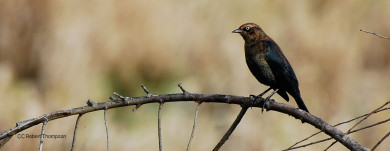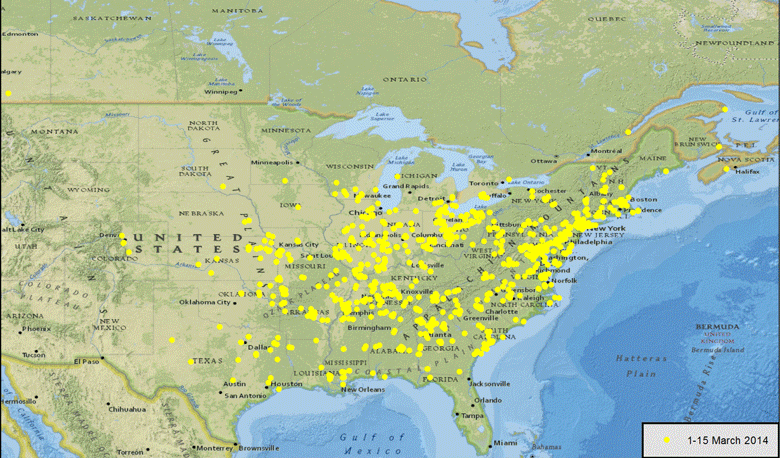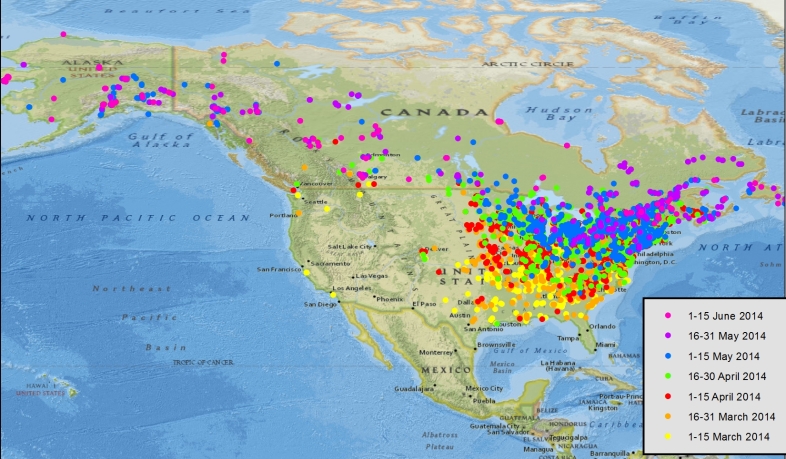As the autumn leaves lose their vivid color and turn a golden brown in preparation for winter, Rusty Blackbirds also don their namesake plumage and molt into rust-tipped feathers for fall migration. While fall begins a season of dormancy for deciduous trees, Rusty Blackbirds are just beginning another life cycle phase filled with high adventure: migrating south to their wintering grounds.
As Rusty Blackbirds meander back to the wooded wetlands of the southeastern U.S., the Vermont Center for Ecostudies, the International Rusty Blackbird Working Group, and other Spring Migration Blitz partners both look back at a successful season of data collection and look forward to the Blitz’s second year, beginning in March of 2015. Between 1 March and 15 June 2015, 4750 observers submitted 13,400 Rusty Blackbird observations to eBird, a 61% increase in submissions over 2013, the year before the Blitz. In March and April, Rusties were on the move, flocking throughout the Midwest, along the southern edge of the Great Lakes, and up the East Coast to reach their breeding grounds. By mid-May, many Rusties had settled in to their breeding grounds in the northeastern U.S. and southeastern Canada, while others continued their travels into northwestern Canada and Alaska. By the end of the Blitz’s first season, Rusties had largely disappeared into the remote boreal forest wetlands in which they nest and raise their young.
Data from this pioneer Blitz year will guide our 2015 and 2016 Spring Migration Blitz efforts. We are currently using 2014 Blitz data to identify potential hotspots, areas that supported large numbers of Rusty Blackbirds during the initial Blitz efforts. In 2015, we will encourage birders to revisit these potential hotspots to evaluate whether the same areas provide migratory habitat for Rusties each year. Of course, we’ll still be looking for new hotspots in 2015 as well, so any Rusty observations during migration will support our efforts. We’re putting together several new resources for the second year of the Blitz, too, including a Blitz brochure targeted at nature center and wildlife refuge visitors and a Blitz eBird tutorial video that guides observers through data submission.
Although the Rusty Blackbird Blitz currently focuses on spring migration, any Rusty observations can help our initiative and direct future research efforts. Whether it be November or March, reporting your Rusty sightings to eBird helps us to understand Rusty Blackbird movement patterns, habitat selection, and numbers. So, while you’re out raking leaves or looking for the first spring crocuses, keep your ears open for a squeaky-hinge call and look around for some rust-tipped blackbirds- your efforts will help to solve one of the final pieces of the Rusty Blackbird conservation puzzle.




Hey do you think you can put like how many Rusty Blackbirds are in VT